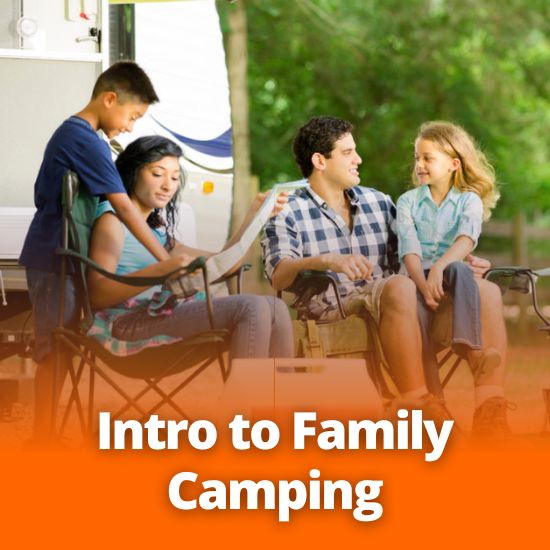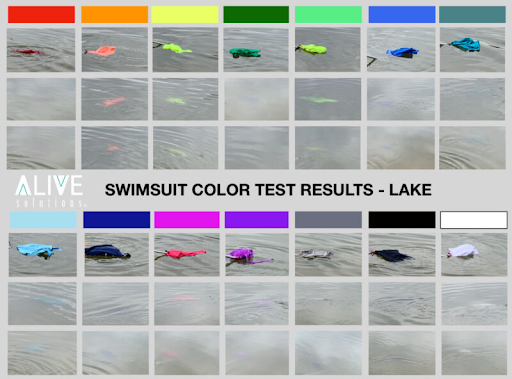
Intro to Family Camping
There’s a saying in the film industry: don’t work with children or animals. There are many who would say the same about travel, but it’s unavoidable. I’m sure someone, somewhere has studied how much more likely destruction is to occur when traveling with pets or kids, but let’s play it safe and say that if your odds are fifty-fifty of disaster occurring by yourself, it increases…probably 300% with kids. (Yeah that sounds right) So with that in mind let’s remember that the worst can and will happen and there are few things you should keep with you so when disaster strikes you have what you’ll need for most situations.
The best kid-disaster preparedness kit will include the basics:
- First aid kit; bandages, kid safe pain/fever meds, antibiotic/antiseptic ointment
- Anti-nausea meds, allergy meds
- Flushable wipes and hand sanitizer/sanitizing wipes
- Snacks
- Change of clothes
Of course, that’s for when you head out, before then you’ve got a bunch of stuff you can (and should) do to prepare any new time kiddos for their first trip – and you too!
- Destination(s)
- Activities
- Introducing your kids/family to camping
- Will your RV work?
- Gear and Packing
Your order of operations may be different than how we’re presenting it, so go with what works for you!
Will Your RV Work?
Ask yourself the following:
- Is it big enough for everyone to be comfortable?
- Where will everyone sleep?
- Where will everyone ride while driving?
- Who will be the primary driver/how will you tow it?
- Does it have all your required features – kitchen, bath, connections, etc?
- Does it have too many conveniences for you to get the ‘roughing it’ experience or do you want a more ‘glamper’ style?
Destination(s)
Consider where you’re actually going. With younger kids look for family-friendly campgrounds with amenities/activities that suit you. Private and government campgrounds will offer different prices and features, as well as first-come-first-serve and reservation options, so make sure you take into account what’s easiest for you.
Consider:
- Lot sizes and privacy
- Hook-ups
- Amenities like showers, forests, walking paths, or lake access
- How much are you willing to pay?
Activities
Now just what are you going to do? This will probably be considered when checking out your location so consider what everyone wants to get out of your trip. When you’re at camp, make sure you do at least one thing every person asked to do while planning.
Introducing Camping
Even just creating a fake fire pit and ‘play’ camping at home can help younger kids get used to the idea of camping. The preparation for adventure is an awesome experience of learning for you and your kids (even if by this point it’s old hat for you). But ‘practicing’ camping can introduce the concept of living in a smaller shared space together and what will be available at camp.
Helping your kids understand what a campground is can be helpful too, especially if you don’t want to mislead them. You can walk through a local park or campground, point out fire pits, picnic tables, camping platforms, and explain the set up.
Your kids might be fascinated with how the table or sofa converts into a bed, or you can walk them through what the bathroom is like and how the kitchen is organized. Talk about who will sleep where and how you’ll have meals and the kinds of things they can and can’t bring along.
Asking specific questions instead of broad ones can also help with planning and expectations. For example, when cleaning up after a day of play you can point out two toys that would be practical to bring (so easy to store and hard to lose crucial pieces) and ask which they would like to have with them, or during dinner, if it’s one that would be easy to prepare at camp, ask them if this would be something they’d like to eat in the RV.
No Bull Tip! A great concept to teach your kids is Leave No Trace.
This can also be a great opportunity to start teaching them about nature, making vacation a great education opportunity. If you’re camping in a National Park there will often be lots of educational features for kids to enjoy. Encouraging your kids’ curiosity can only pay back dividends down the line!
Putting together your mini-scientist’s kit? Consider adding the following:
- Magnifying glass
- Tape measure
- Notebook and pencil(s)
- Colored pencils
- Disposable camera
- Flashlight
- Binoculars
Traveling
When you do finally get on the road make sure your kids will be occupied for the ride, and you’ll also inevitably be hit with “I’m hungry!” so keep a cooler accessible and stock it with high-protein, low-sugar snacks. If you buy in bulk, divide the snacks into tightly sealed containers to avoid spillage.
Know how much travel your kids can tolerate. How many hours they can spend in the car in a single day, how often you’ll need to stop for potty breaks, to let them run around, when you’ll stop for lunch, etc. Check your route for rest areas, playgrounds, and even emergency gas station bathrooms!
Packing and Gear
And finally just what do you need when camping with kids? You might be okay with a bit of rough and tumble, but children don’t yet have the mental maturity for thinking through some of these things and working through differences or conveniences they have at home.
When packing don’t bum-rush into the closet Walmart, list what you need, you probably have a lot of it already. You can probably get a bunch of stuff second hand too, like cutlery, dishware, and even blankets (just make sure you give ‘em a thorough wash first).
Here are a couple basic lists for you. We’re not saying you’ll need all of it, but it can give you a base zero to work from. (A great way to test if you’ve got everything, do a few nights of ‘backyard’ or curb-side camping in your RV. That way if you have forgotten something, you can run inside to grab it. Just make a note to remember)
Kitchen
Food
Storage containers
Cooler(s)/ice
3 meals/day plus snacks
Equipment
Stove/oven/microwave
Pots and Pans
Kettle/Coffee supplies
Extra water (if necessary, consider location)
Dishes and cutlery
Cooking Utensils (indoor)
Can opener
Oven mitts
Knife and cutting board
Tongs and spatula(s)
Cooking Utensils (indoor)
Can opener
Oven mitts
Knife and cutting board
Tongs and spatula(s)
Fire Pit
Check out our posts on campfire cooking tips, and campfire gear
Wood/Charcoal
Kindling
Fuel/matches
Cleaning
Dish soap
Scrubbing brush/pad
Garbage bags
Washing bucket (if necessary, consider your RV)
Cooking Utensils (outdoor)
Grill/Tripod
Dutch oven
Foil
Hot dog/marshmallow sticks/Pie irons
Heat safe/long handled fork, tongs, spatula
No Bull Tip! Meal plan by day and meal so you know every ingredient and tool you need. This will help ensure you have everything and that you don’t overpack unnecessary items or ingredients!
Clothing
Everyday outfits
Sleepwear
Swimwear
Socks and underwear (always pack extra, especially with really little kids)
Shoes (good for running around)
Sun hat and a warm harm (like a toque)
Rainwear
Warm jacket
If you’re stuck on how to plan just how many outfits to pack, here’s one way: 1 outfit per day, plus an extra for emergencies. So, for a five day trip = six outfits.
Here’s how it works:
During the day kids can get messy, with an evening shower planned for each day. After showering, kids can either get into PJs or a new clean outfit (which will then be their clothes for the next day), this is with the plan to stick to clean evening activities. Always plan to have a clean outfit for the trip home.
Vary wardrobe with long and short-sleeves to account for weather, along with long pants and shorts. Have a lightweight sweater or sweatshirt, and one warm jacket (and/or a raincoat).
Your family may need more or less, with extra underwear and pants for kiddos still toilet training (or are only more recently getting with that program). And don’t worry about keeping everyone white carpet spotless, some grass stains here and there won’t kill anyone. Remember to dress your kids in bright colors so they’re easy to see at a distance; neutral colors will get lost in the woods.
Alive Solutions, a company specializing in aquatic safety, put a variety of colored swimsuits to test which colors were most visible in the water. With drowning being the leading cause of death for children ages 1-4, and second leading cause for ages 5-9, consider the color your kids swim in for safety.

The first row of images show swimsuits on the surface, the second row shows a shore-level perspective and the third row were taken from a slightly elevated perspective.
And for activities, consider what your kids will use; some campsites will have on-site amenities and rec areas (you can call ahead and ask the park office what they have).
We’ve listed a few examples of what you can pack:
Outdoor
Bikes
Scooters
Skateboards
Bats/balls
Frisbee
Beach
Cards
Books
Board games (check out our lists here and here
And finally, a few miscellaneous lists to make it easier for you:
Hygiene
Toothbrushes/toothpaste
Soap and towels
Clothesline (for hand washing or not using a dryer)
Toilet paper/Black tank chemical
Comfort
Pillows (and stuffed animals)
Child carriers (as necessary)
Lawn chairs and mats/rug
Heater (if necessary)
Safety
First-aid kit
Flashlights/lanterns, batteries/propane(depending on lantern)
Whistle
Walkie-talkies (great for low cell service areas)
Repairs
Duct tape
Sewing kit and LOTS of safety pins
Tarp and plastic bags